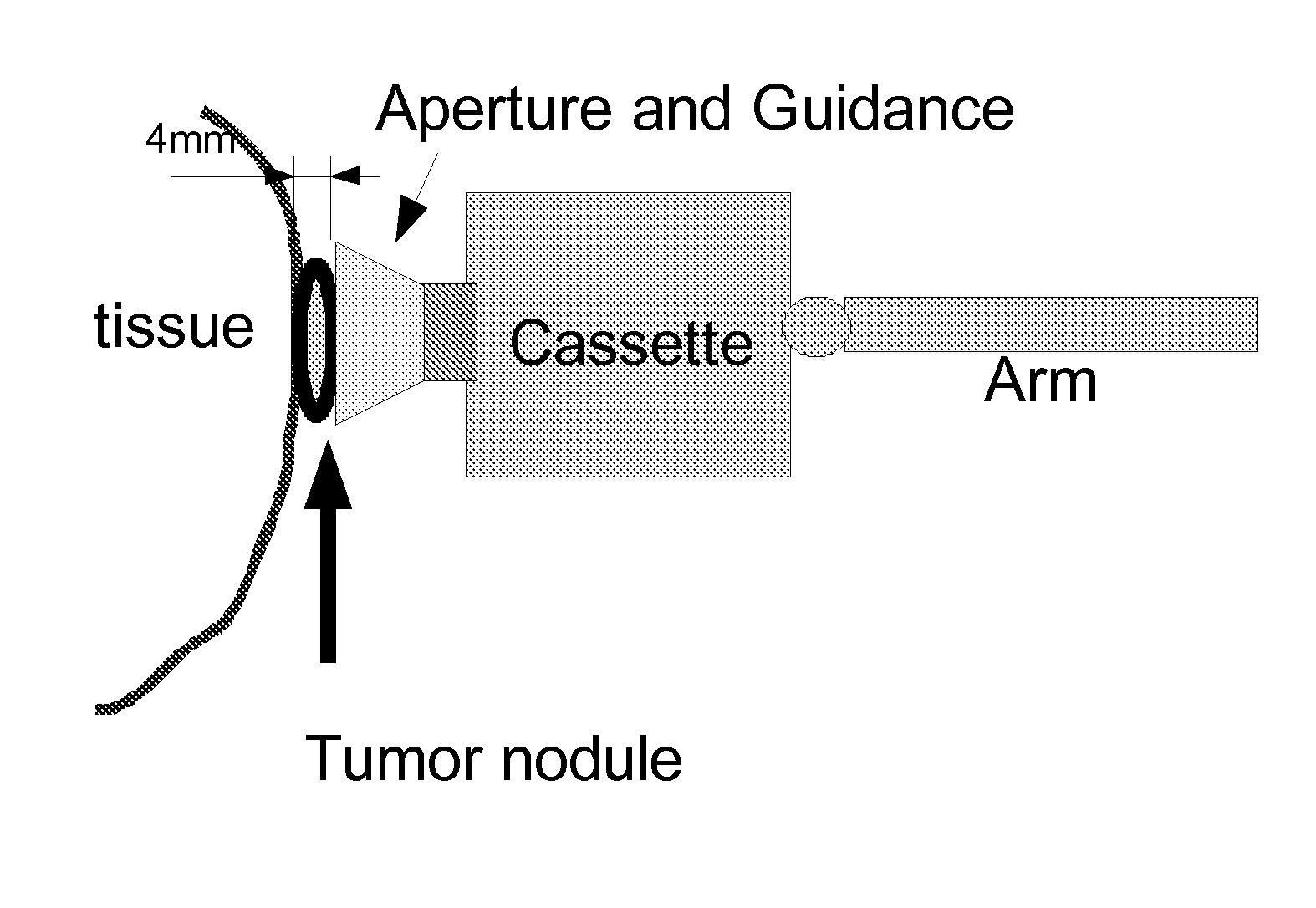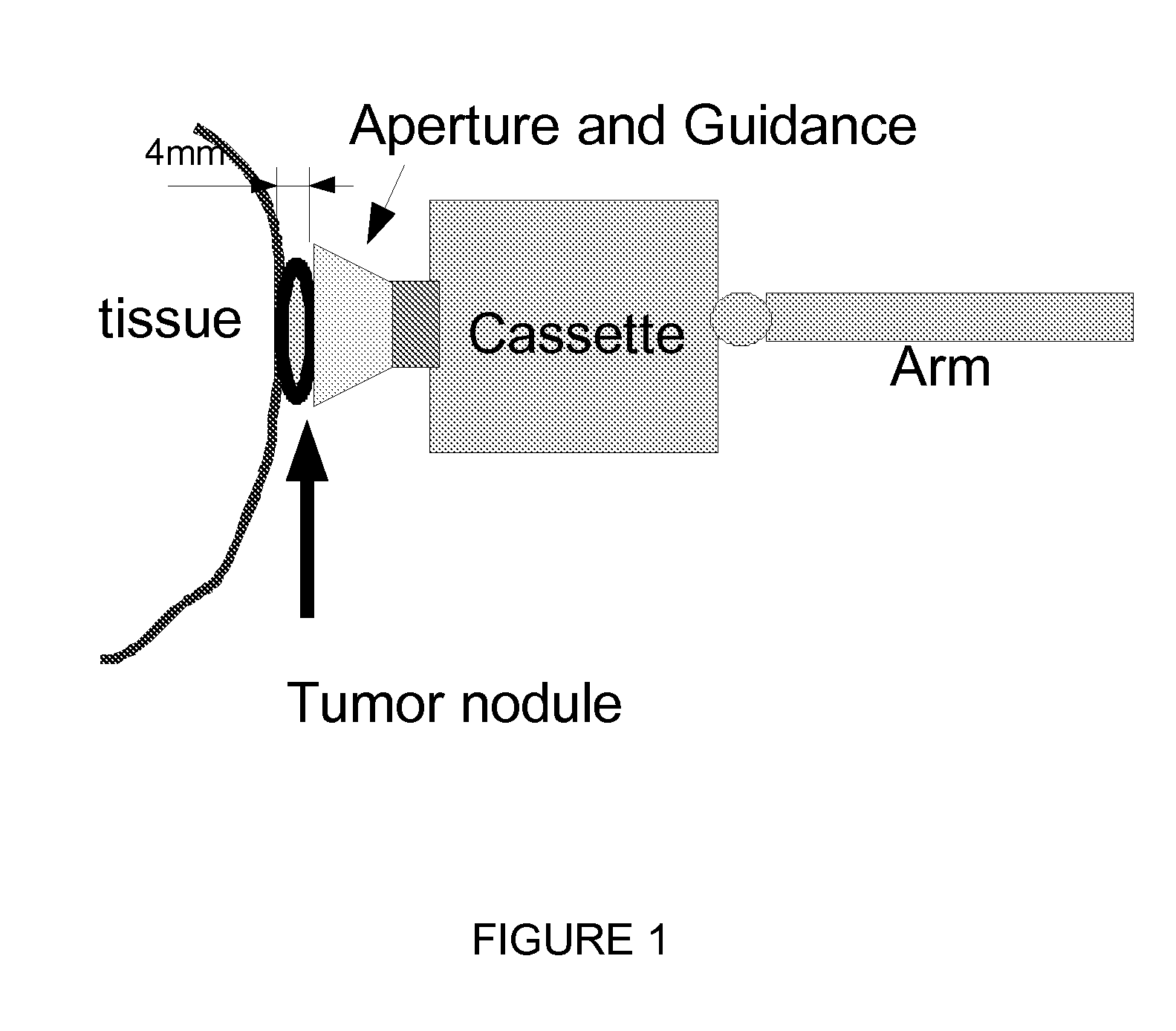Direct visualization robotic intra-operative radiation therapy applicator device
a radiation therapy and robotic technology, applied in the field of radiation cancer treatment, can solve the problems of difficult to obtain what is referred to as a clear margin, difficult to achieve the effect of clear margin, and difficult to achieve clear margin, etc., to achieve the effect of improving outcomes, and avoiding radiation therapy complications
- Summary
- Abstract
- Description
- Claims
- Application Information
AI Technical Summary
Benefits of technology
Problems solved by technology
Method used
Image
Examples
Embodiment Construction
[0032]The preferred mode of invention proposes to first select an interchangeable irradiating capsule with a shutter as set forth below. Based on the depth and size of tissue to be treated, a radiation source will be selected for placement in the capsule and mounted on the robotic arm of the SRIORT. The arm would then be moved to the proper location for irradiation of the tissue, under direct visualization, with or without assistance from alternative imaging modalities or any combination of these.
[0033]Expanding on the above, the key invention components are:[0034]A radiation source[0035]A capsule / arm with an aperture opening to a cavity containing the radiation source with certain control electronics and devices designed to be connected to the surgical robot and inserted into the patient's body through the laparoscopic / surgical robotic incisions[0036]For a lesion, tumor, tissue, or organ, a mechanism for displaying pre-operative medical imaging, fused pre-operative medical imaging,...
PUM
 Login to View More
Login to View More Abstract
Description
Claims
Application Information
 Login to View More
Login to View More - R&D
- Intellectual Property
- Life Sciences
- Materials
- Tech Scout
- Unparalleled Data Quality
- Higher Quality Content
- 60% Fewer Hallucinations
Browse by: Latest US Patents, China's latest patents, Technical Efficacy Thesaurus, Application Domain, Technology Topic, Popular Technical Reports.
© 2025 PatSnap. All rights reserved.Legal|Privacy policy|Modern Slavery Act Transparency Statement|Sitemap|About US| Contact US: help@patsnap.com



